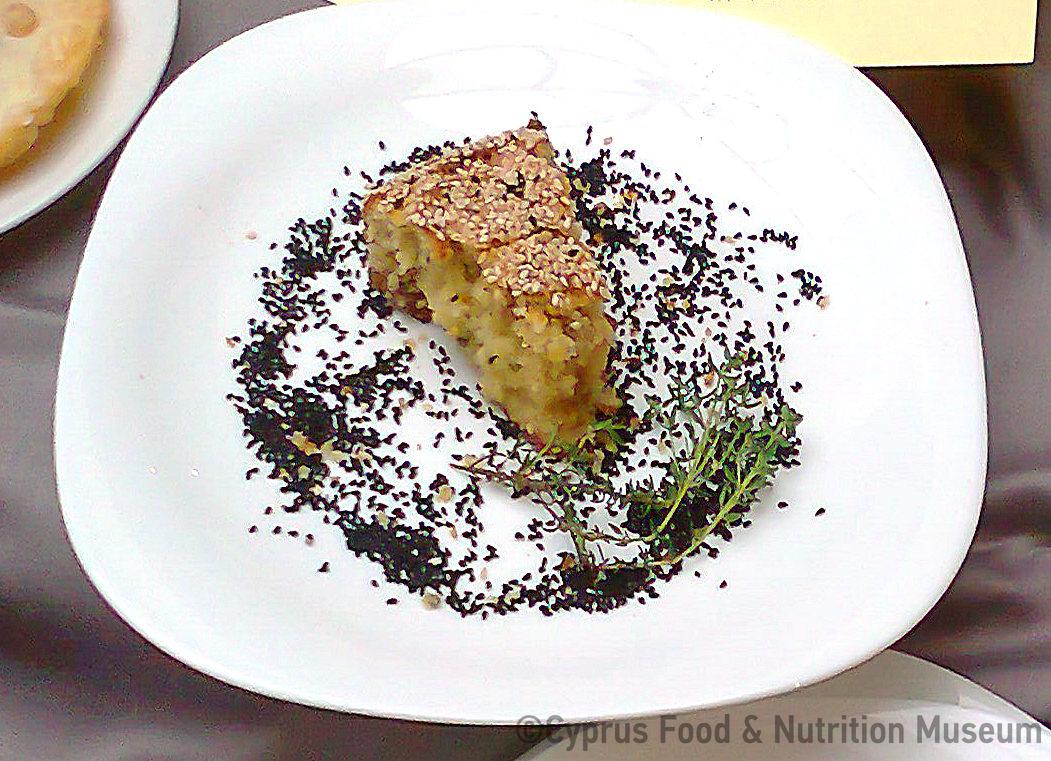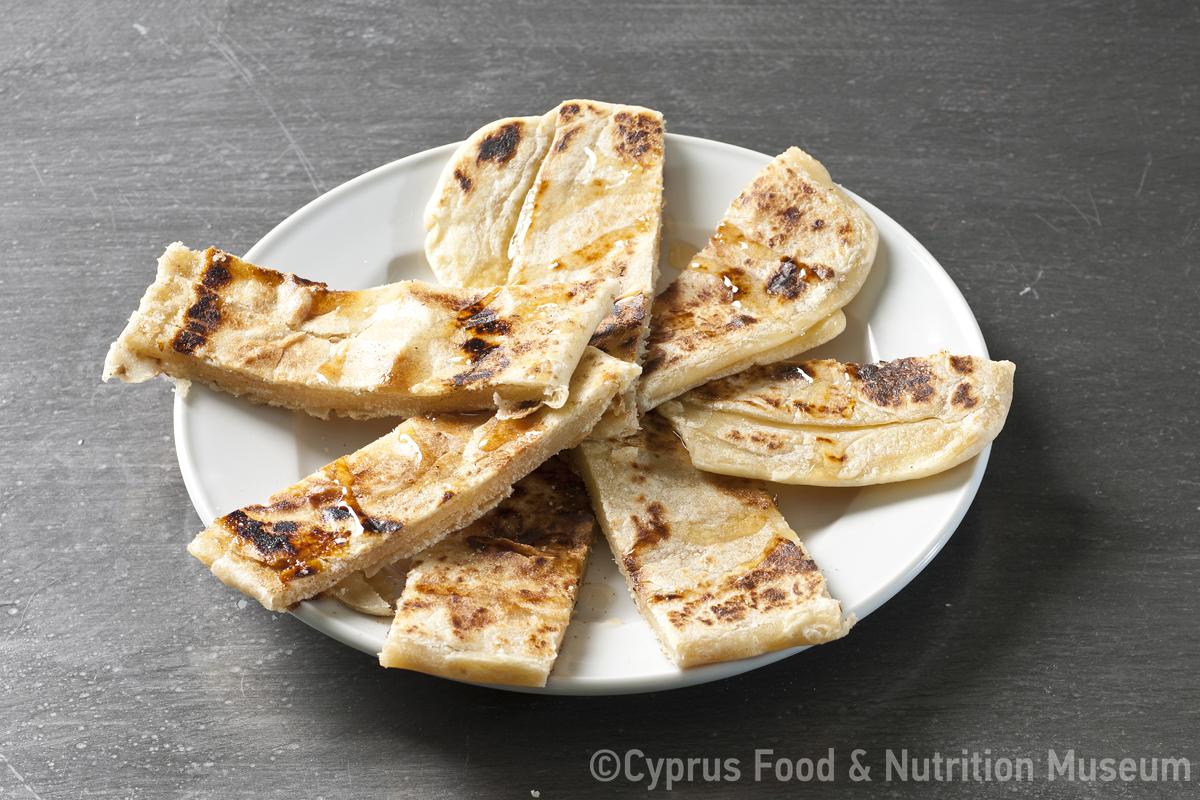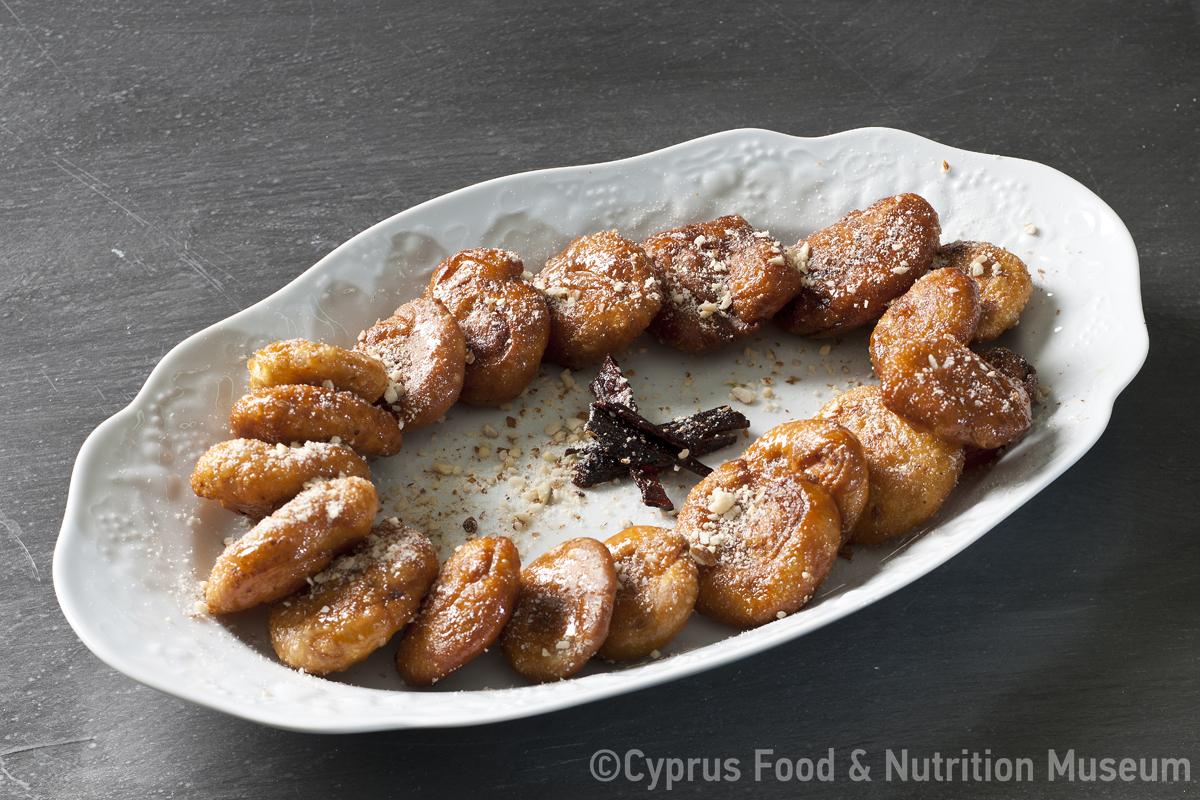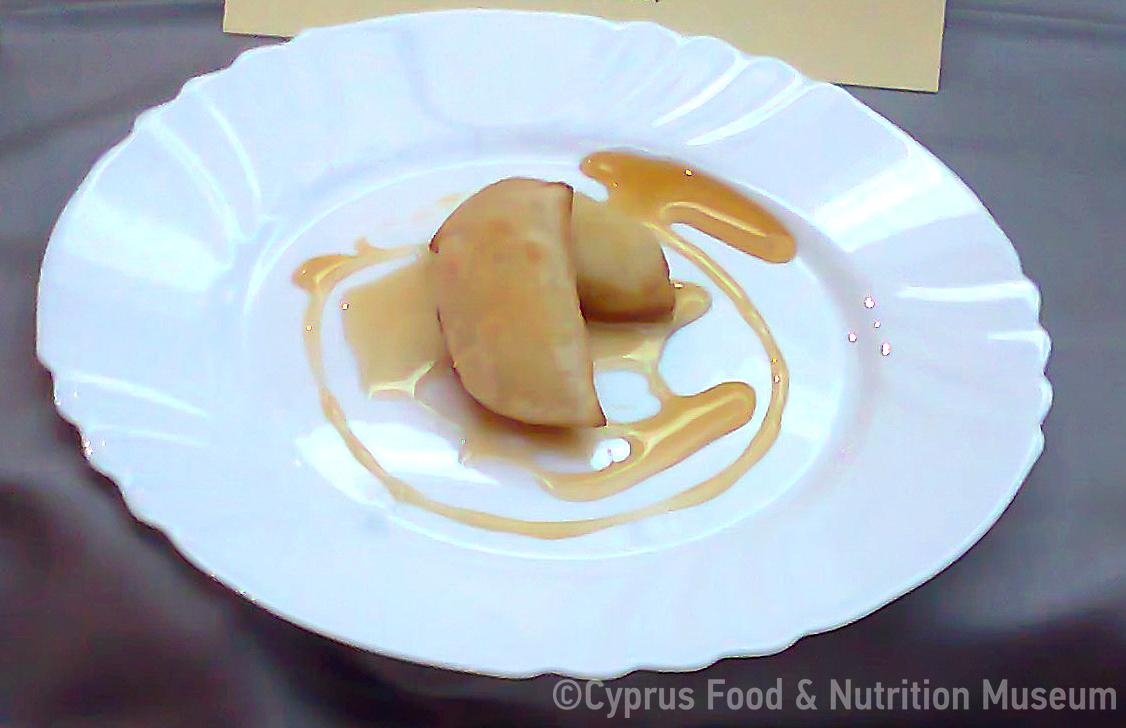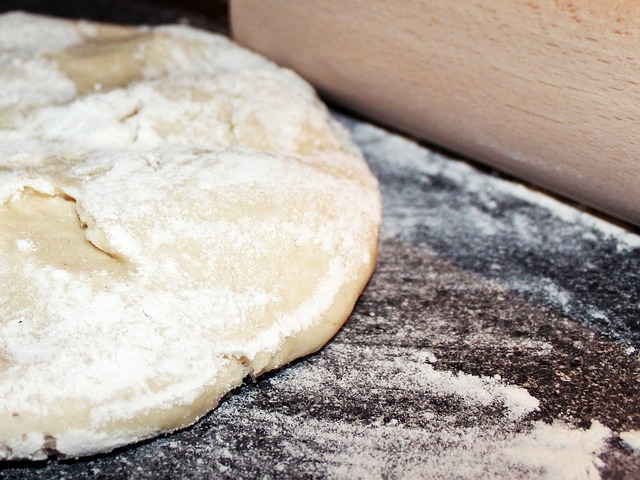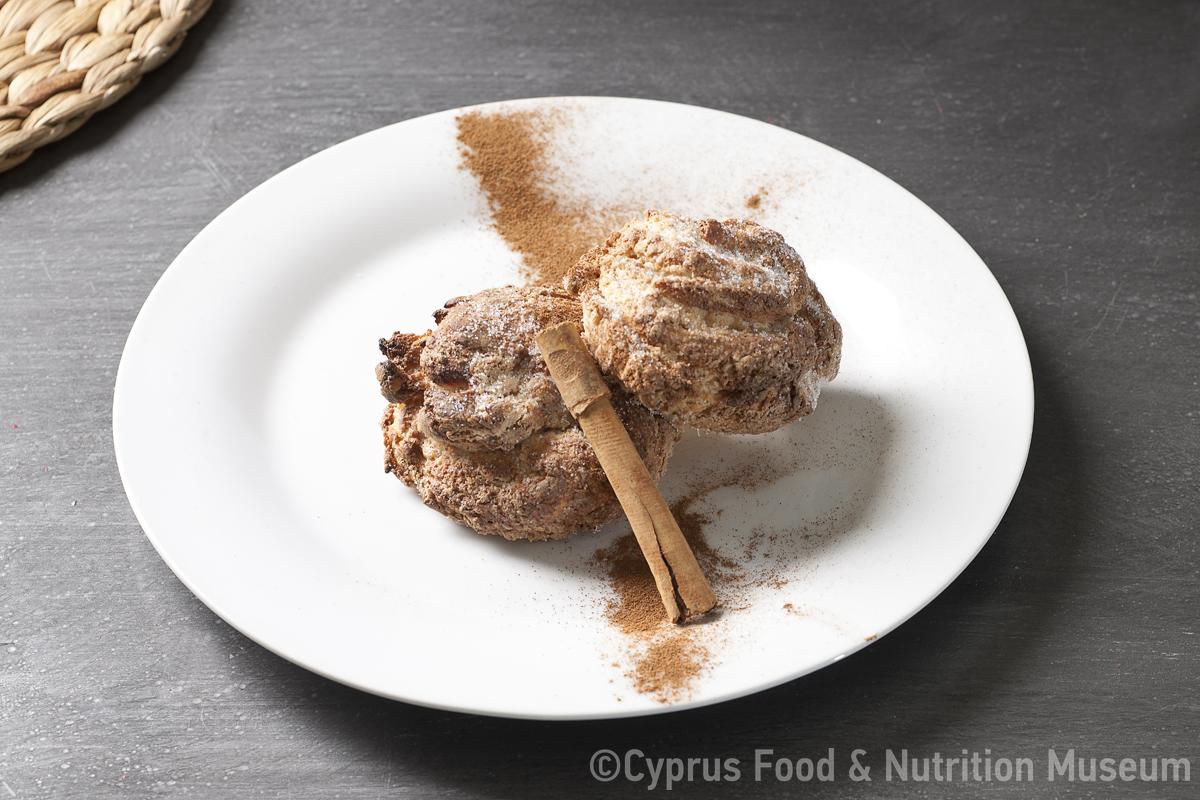Name - Origin
Pittes made with a thin dough like batter, without oil or fat, baked on a brick (Yangoullis 2009, entry laggopitta - lalaggopitta, 245; Kypri 1983 [2003²], entry κουκκοῦνα,η, 469), hot rock or slab (Petrou-Poeitou 2013, entry Λαγγόπιττες, 75).
< laganon (Andriotis); according to Karapotosoglou, from lalaggi < persian lalang (Yangoullis 2009, entry λαγγόπιττα - λαλαγγόπιττα,η, 245)
Xenophon P. Pharmakidis spells the word with gk (lagkopittes) and not gg (laggopittes), as does Paraskevas M. Samaras in his article «Παραδοσιακές τροφές από ζυμάρι» (traditional foods made from dough) in the journal Λαογραφική Κύπρος (laografiki Kypros) (Kypri 1983 [2003²], entry κουκκοῦνα,η, 469; Samaras 1992, 83).
Pharmakidis points out that in Tilliria they are called laggopittes, while in Paphos they are called koukkounes (Kypri 1983 [2003²], entry κουκκοῦνα,η, 469).
Laggopittes were made with a thin dough similar to batter and baked in the satzi, after being spread with oil (Samaras 1992, 83).
According to Pharmakidis, these pittes were made in Tilliria. The method used was as follows: They would prepare a thick batter, which they would place in a hot pot over a moderate fire. They would put in as much batter as when spread in the pot, it was half a finger thick. While being cooked, small holes were formed. The pitta, after being cooked on one side, was flipped over (Kypri 1983 [2003²], entry κουκκοῦνα,η, 469).
Functional and symbolic role
While the pittes were being baked, holes were formed, which is why they were called "tripites" (pierced). In the village of Agia Marina of Skylloura, housewives would add herbs such as allspice to the batter.
Similarly, laggopittes were baked on a slab or in a pot. The housewives would make batter and, after heating the slab and brushing it with oil, they would spread the batter on it. In the Morphou district, raisins and sugar would be added to the laggopittes batter and they would be baked in a pan. These laggopittes were elastic and the inside resembled a honeycomb. They were served with honey (Kypri - Protopapa 2003, 150).
In Agios Merkourios village in the Paphos district, they were prepared on the feast of Agia Katerina, while in Nikita village in the Morphou district, on the feast of Agios Nikolaos. In the village of Rizokarpaso, they were common during fasting periods, especially on the feasts of John the Baptist (29 August) and the Exaltation of the Holy Cross (14 September) (Kypri - Protopapa 2003, 150-151, 153).
Additional information and bibliography
Yangoullis K. G. (2009), Θησαυρός Κυπριακής Διαλέκτου. Ερμηνευτικό, Ετυμολογικό, Φρασεολογικό και Ονοματολογικό Λεξικό της Μεσαιωνικής και Νεότερης Κυπριακής Διαλέκτου, Βιβλιοθήκη Κυπρίων Λαϊκών Ποιητών, 70, Theopress Publications, Nicosia.
Kypri Th. D. (ed.) (1983 [2003²]), Υλικά διά την σύνταξιν ιστορικού λεξικού της κυπριακής διαλέκτου, Μέρος Β΄, Γλωσσάριον Ξενοφώντος Π. Φαρμακίδου, Publications of the Centre for Scientific Research, IX, Nicosia.
Kypri T. - Protopapa K. A. (2003), Παραδοσιακά ζυμώματα της Κύπρου. Η χρήση και η σημασία τους στην εθιμική ζωή, Publications of the Centre for Scientific Research, XVIII, Nicosia.
Petrou-Poeitou E. (2013), Από πού κρατάει η σκούφια τους. Λέξεις και ιστορίες από τον κόσμο της γεύσης, Epiphaniou Publications, Nicosia.
Samaras P. M. (1992), «Παραδοσιακές τροφές από ζυμάρι», Λαογραφική Κύπρος 22,42, 83-86.
Demetra Dimitriou, Tonia Ioakim, Argyro Xenophontos
